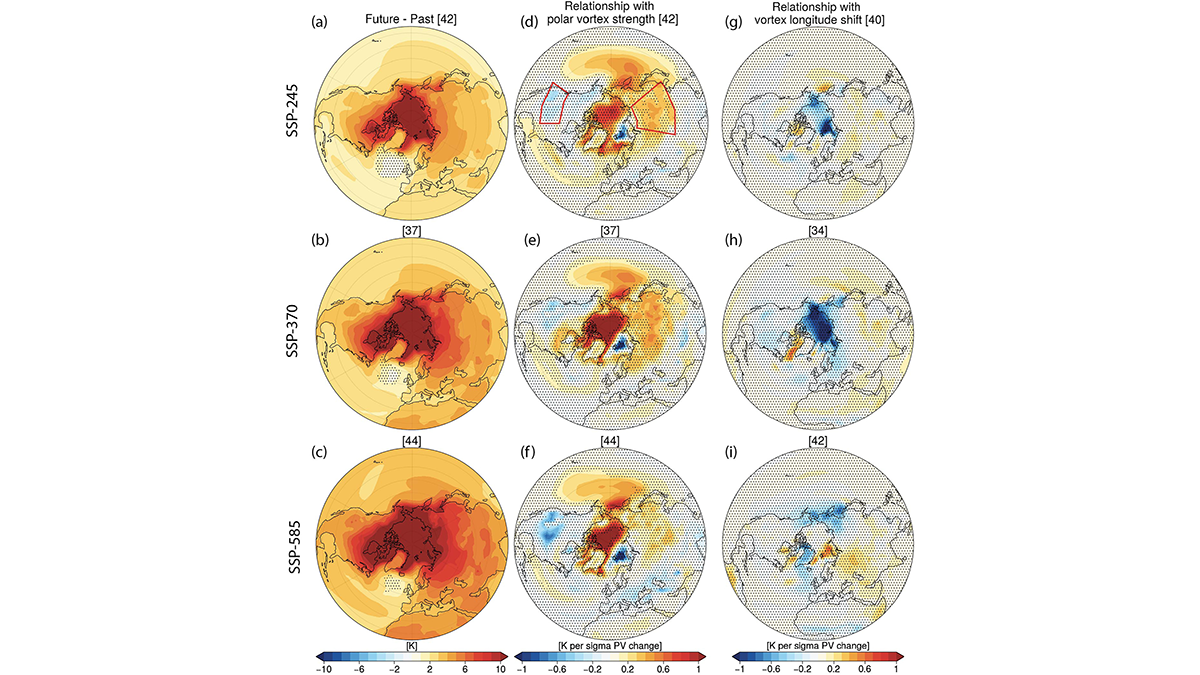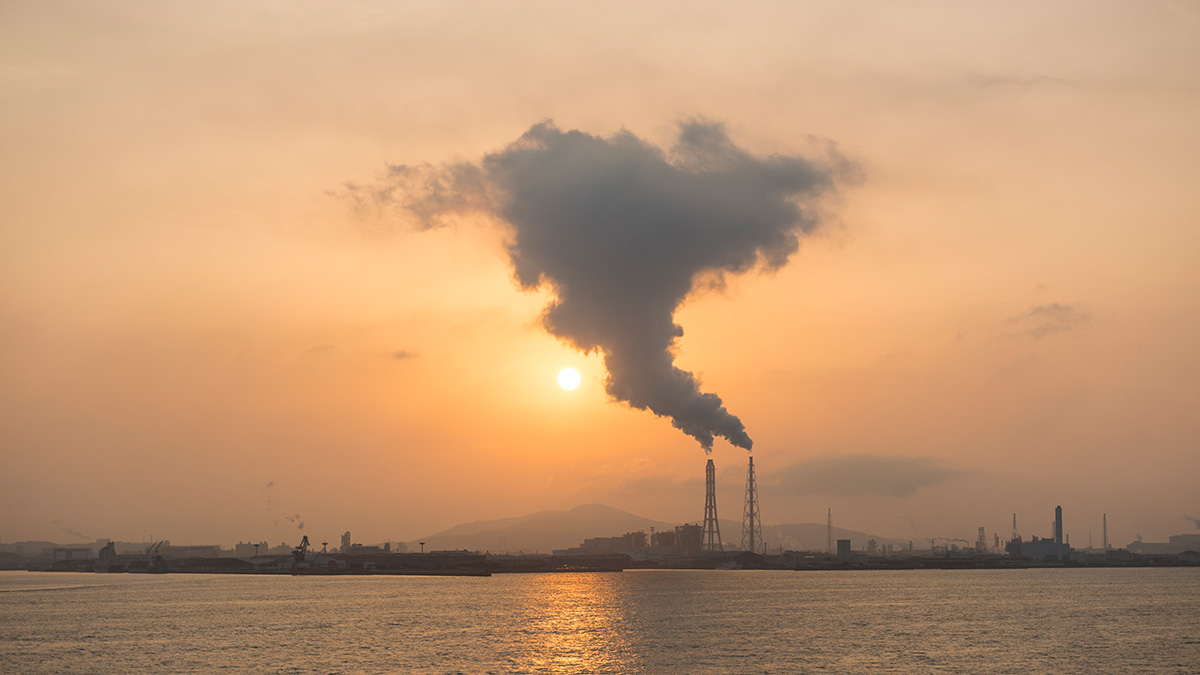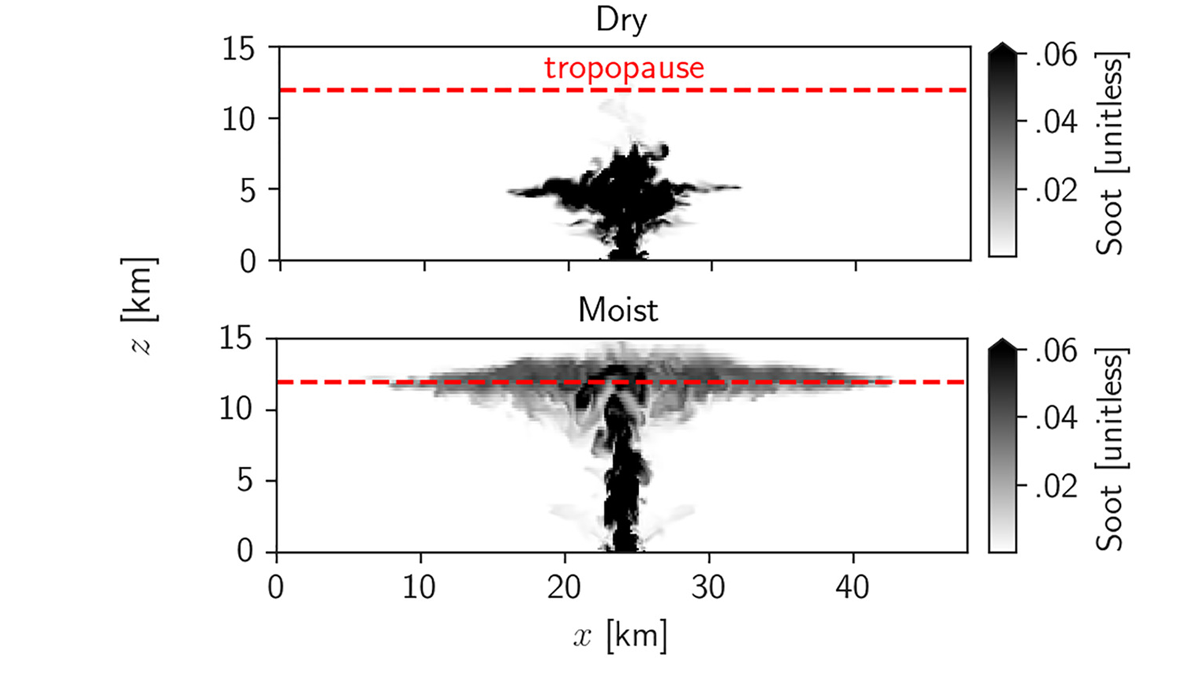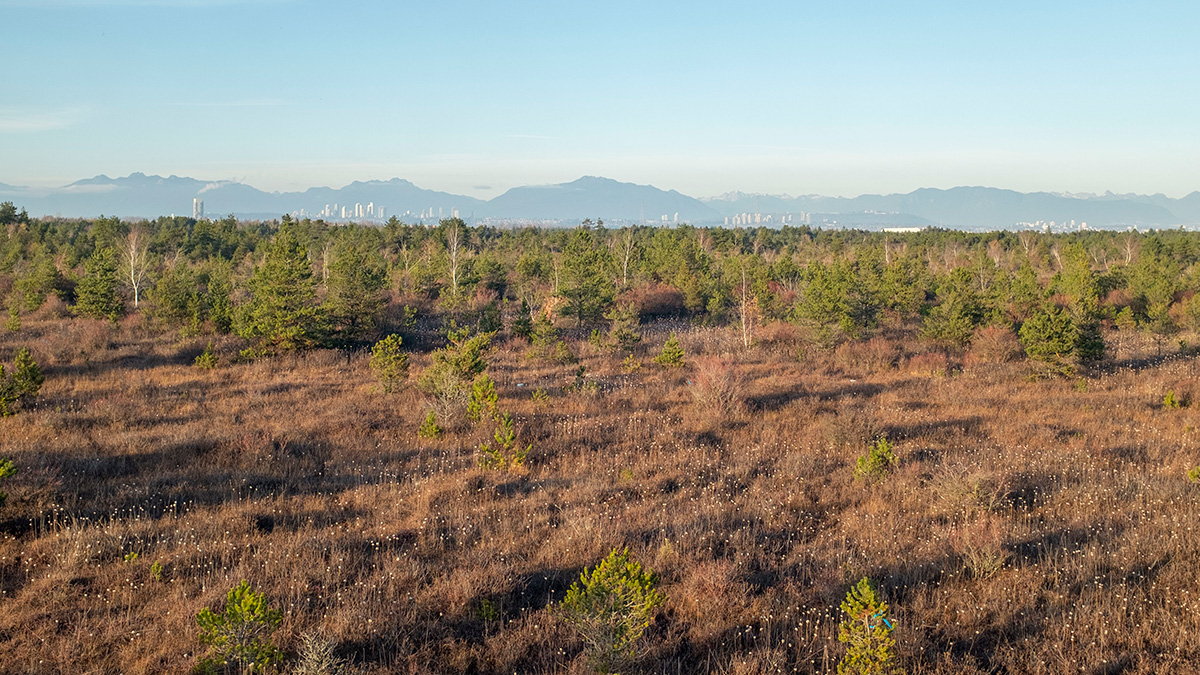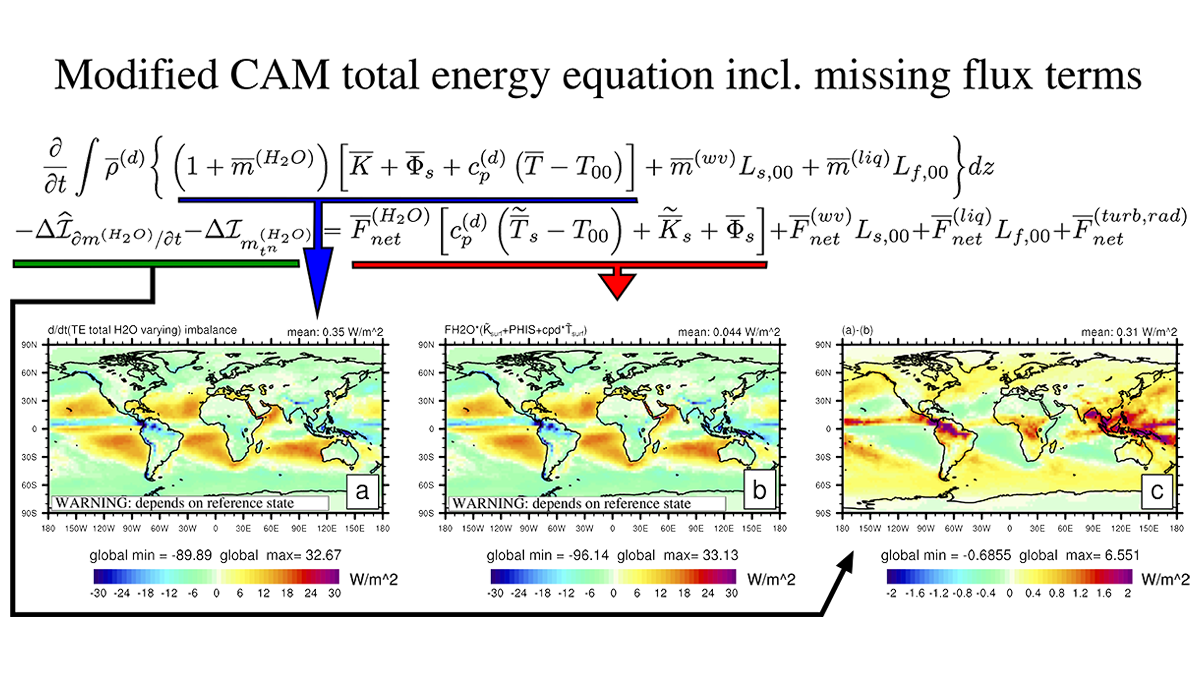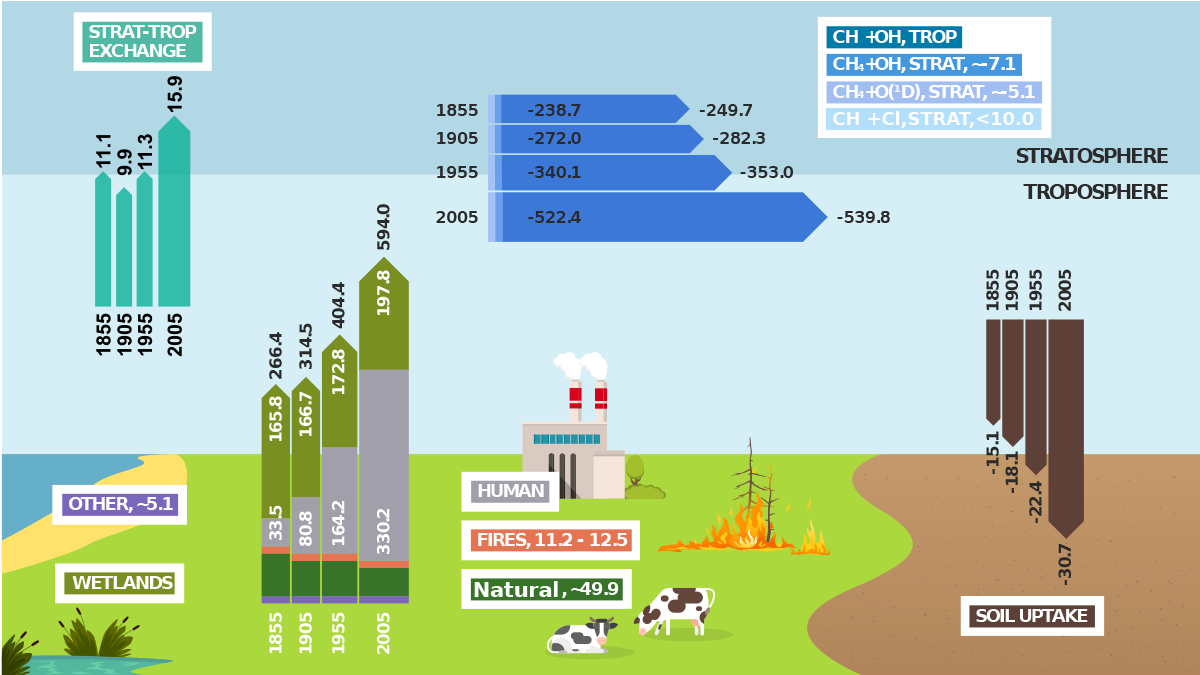Climate models have disagreed on the future evolution of the stratospheric polar vortex and links to the troposphere, but a new study revisits this problem with state-of-the-art climate models.
everything atmospheric
Tracing Anthropogenically Emitted Carbon Dioxide into the Ocean
Researchers labeled anthropogenically emitted carbon and tracked it with an ocean circulation model to determine whether it winds up in the sky or sea.
How Can Nuclear Plumes Reach the Stratosphere?
A new study shows how moist convection can lift sooty air from firestorms to the stratosphere, potentially leading to a nuclear winter.
Rain Makes Skulls Bigger—in Mice
New research shows how regional weather, shaped by towering mountain ranges, might influence the size and shape of local rodents.
Satellites Can Accurately Take Earth’s Temperature
Satellite-based measurements of land surface temperature may prove to be an essential pairing with near-surface air temperatures to understand global warming and cooling trends.
Exploring Carbon Emissions in Peatland Restoration
Rewetting bogs can increase methane emissions in the short term, but ultimately the approach helps restore peatlands and create larger carbon sinks.
Consistently Closing the Energy Budget in Earth System Models
Researchers review the challenges and prospects of Earth System Models that incorporate a consistent closed energy budget.
Tropical Wetlands Emit More Methane Than Previously Thought
Climate models could be vastly underestimating methane emissions from the world’s tropical wetlands, according to observational surveys of wetlands in Zambia.
The Long-Lasting Impact of a Nuclear War on the Ocean
Model simulations of the impact of a large-scale nuclear war reveal long lasting effects with much of the ocean not returning to pre-war levels despite the cessation of the initial cooling.
A Significant Advancement in Modeling the Global Methane Cycle
The capability to fully model the global methane cycle advances the international climate science community’s ability of providing essential evidence to underpin climate mitigation policy.

